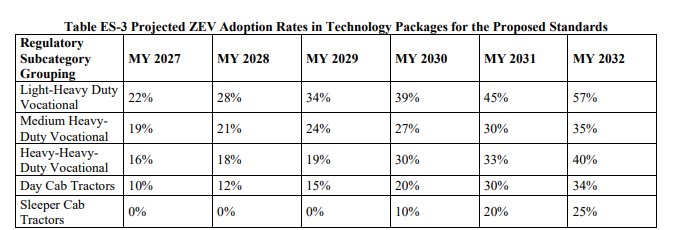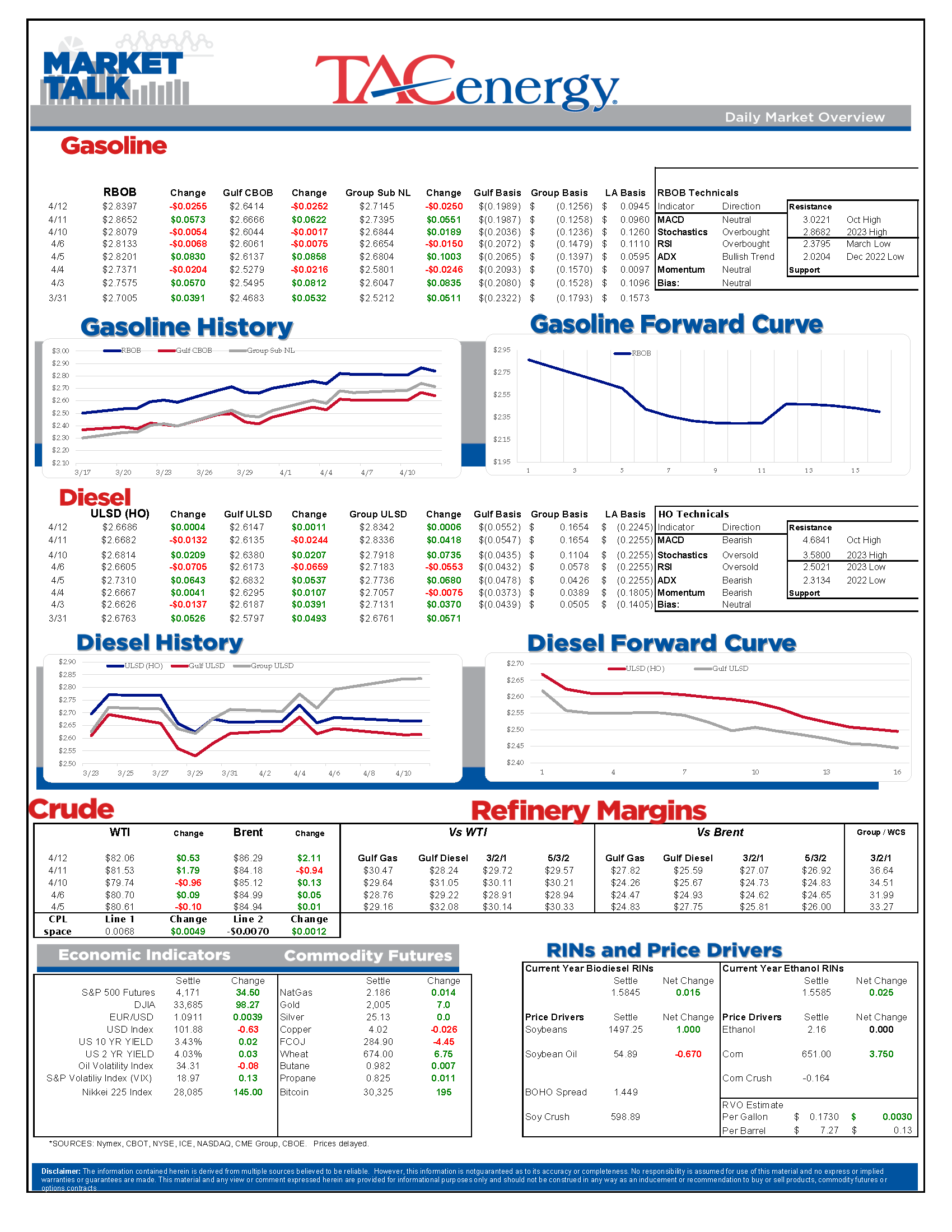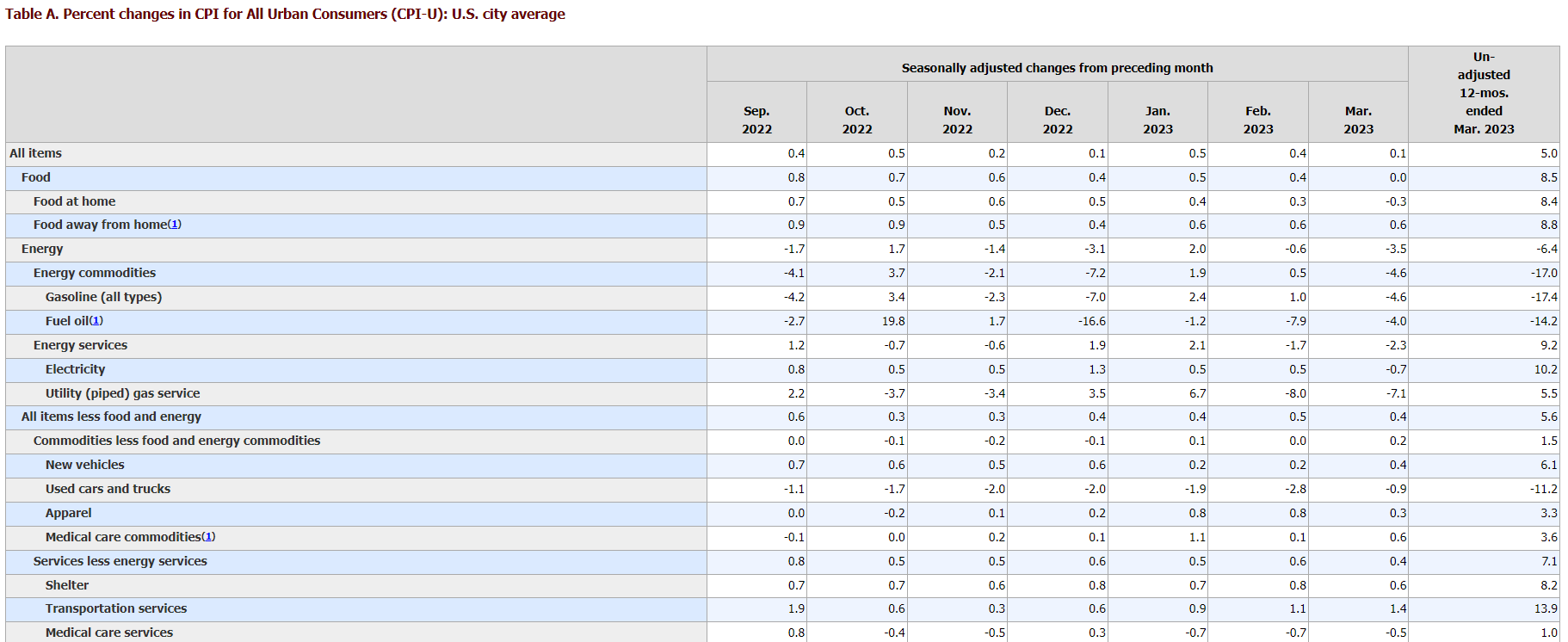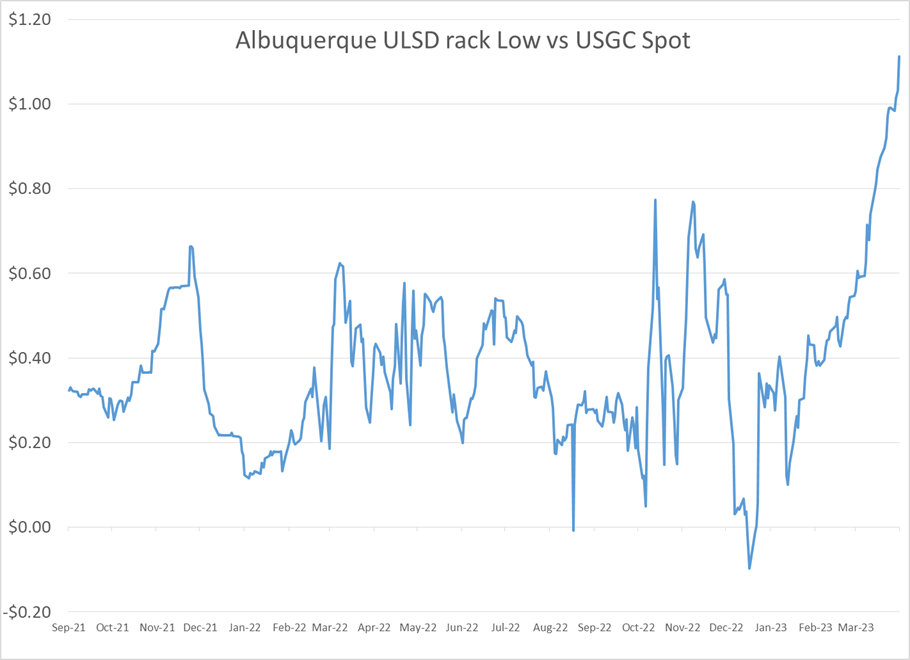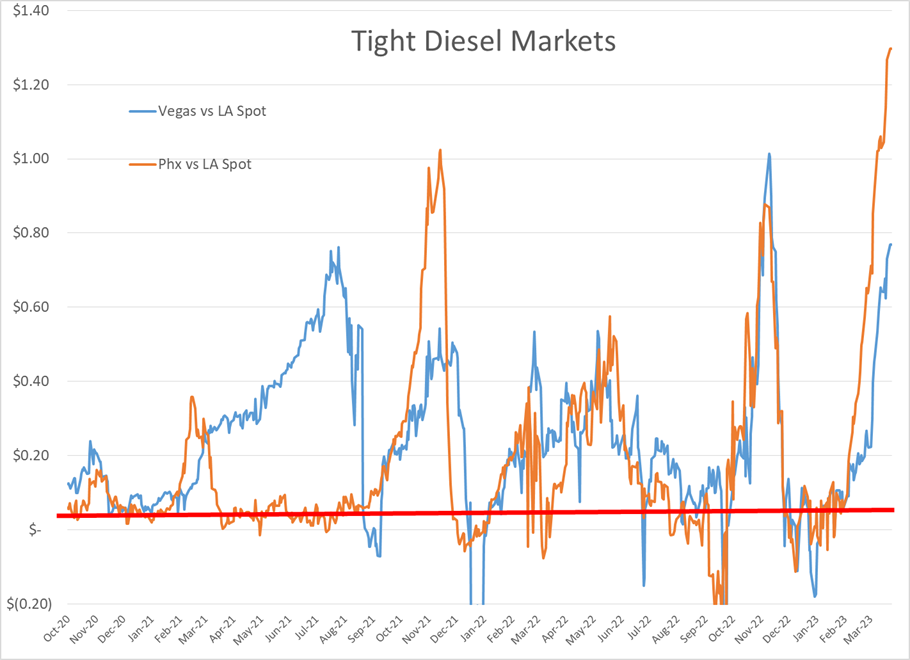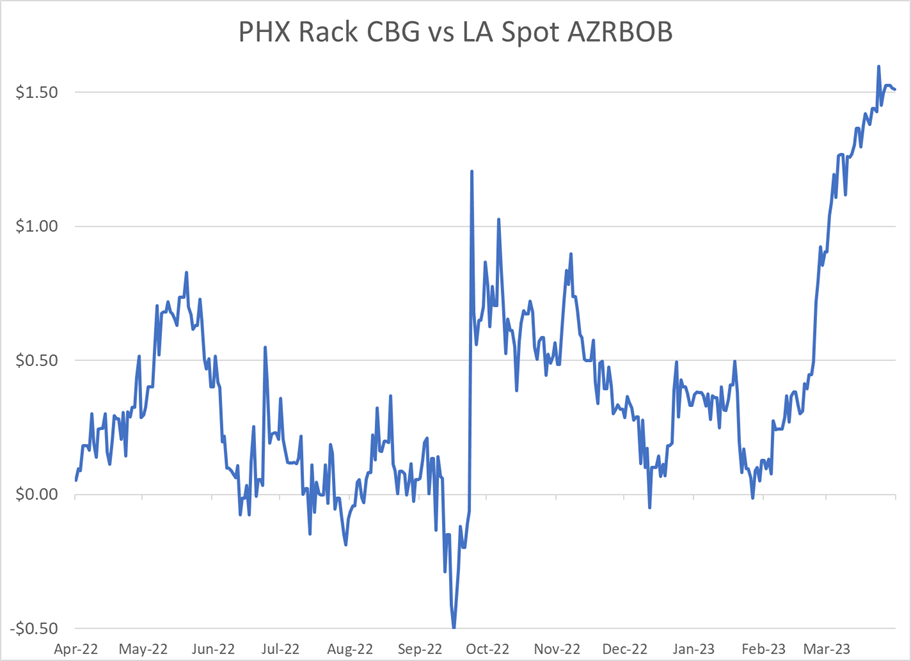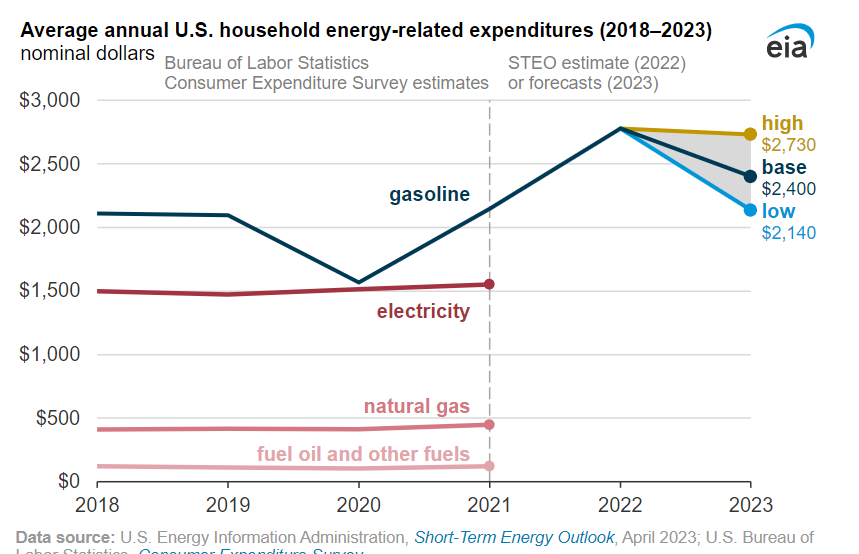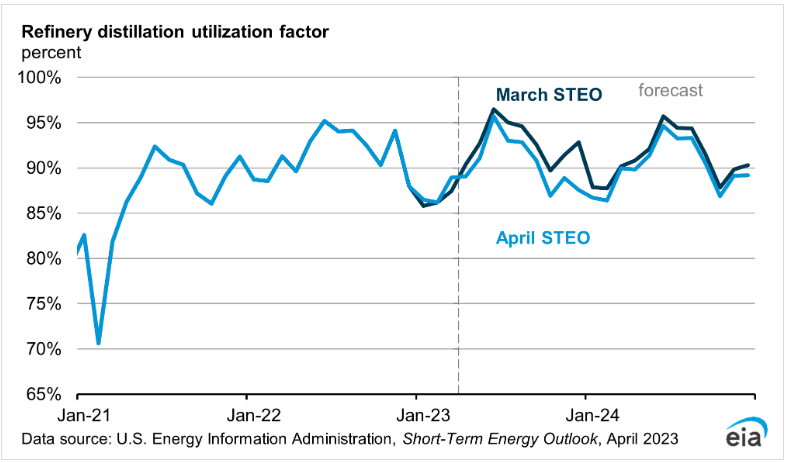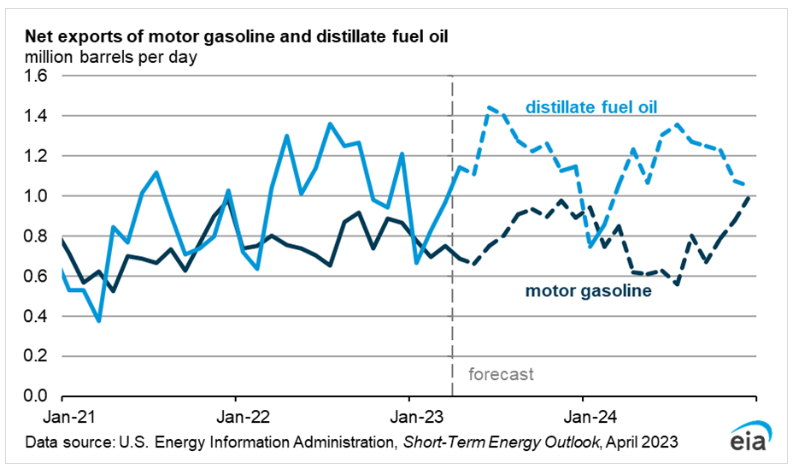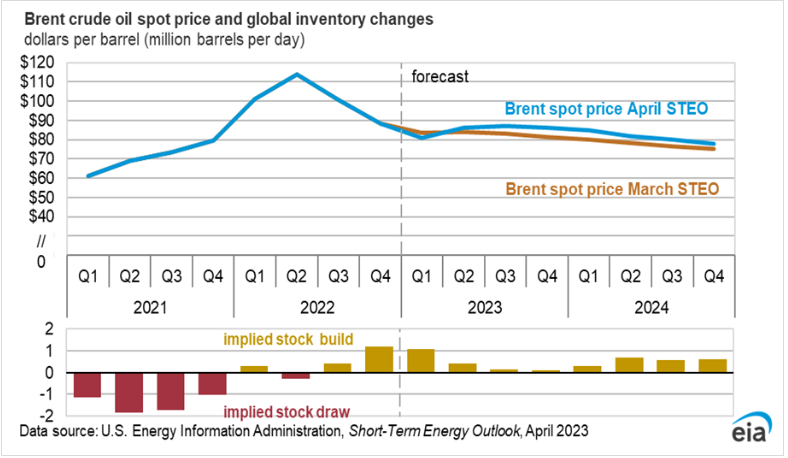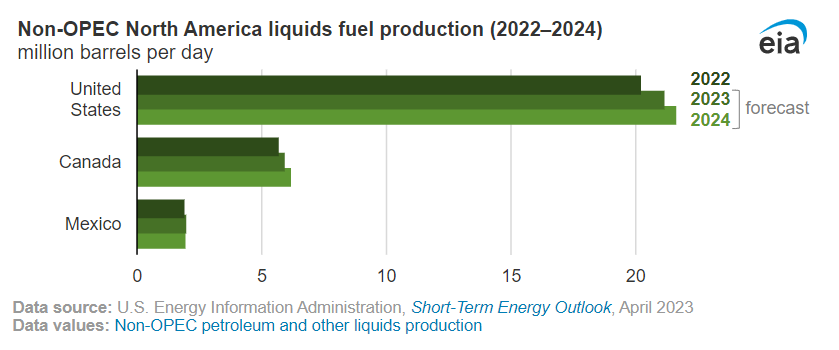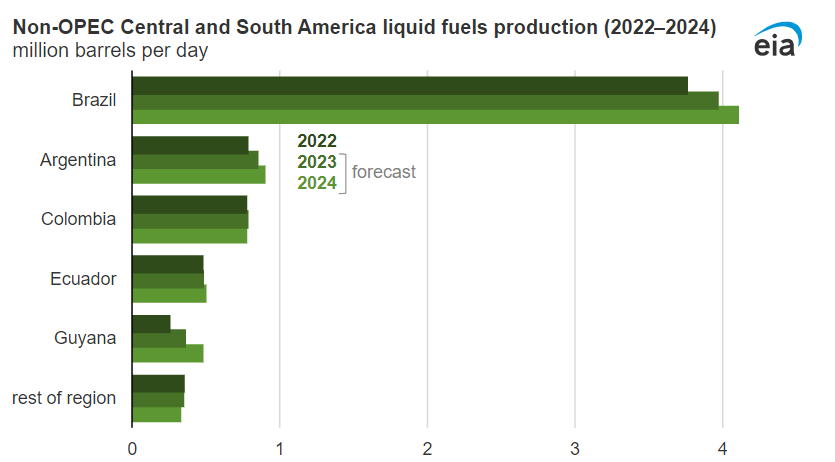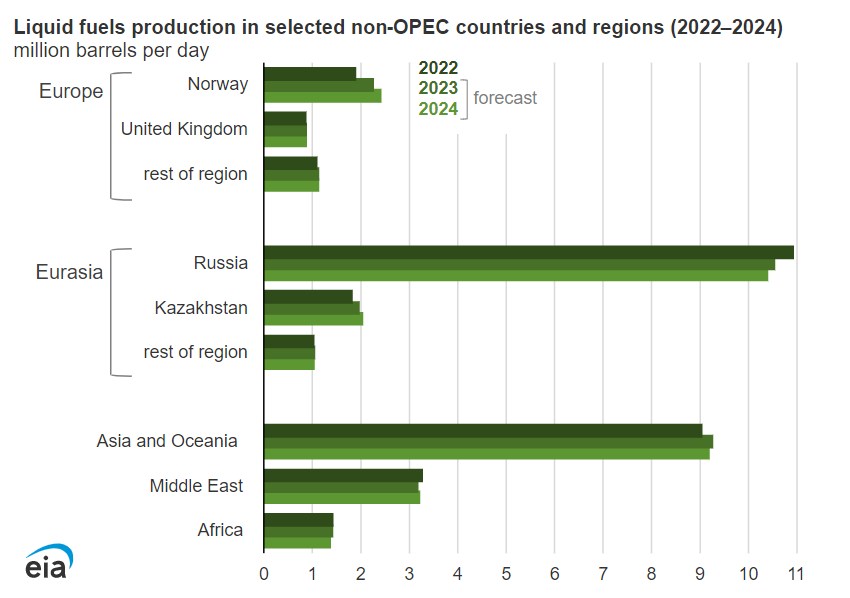Energy Prices Were Moving Modestly Lower Overnight But Bounced Immediately Along With Equity Markets

Energy prices were moving modestly lower overnight but bounced immediately along with equity markets following the March CPI estimate. That report showed that inflation continues in the US, but at a slower pace and below levels many predicted, which is causing algorithms to front run the crowd that will say the FED will have to stop raising rates based on this report. Energy prices were a key contributor to the slow-down in inflation with gasoline and fuel oil prices both down 4% or more over the past year, while all items besides food and energy were still up 5.6% year on year.
The EIA held its forecast for global demand steady in the April Short Term Energy Outlook but increased its price forecasts slightly due to the OPEC production cuts announced in early April. The report also highlighted how OPEC’s cuts means that more market share for supply is being taken by the US and other countries. Despite the recent pullback in drilling activity, the EIA still predicts that the US will set output records over the next 2 years.
The API report Tuesday afternoon showed that gasoline and crude oil stocks had small builds of less than a million barrels last week, while distillates saw a healthy decline of nearly 2 million barrels. That report seemed to have gasoline buyers on their heels, with prices down a nickel a gallon overnight after touching fresh 6-month highs at $2.8682 during Tuesday’s session. The EIA’s weekly report is due out at its normal time this morning.
Extremely tight supplies continue across the southwestern US this week with $1/gallon+ premiums vs spot markets becoming a normal occurrence for prompt gasoline and diesel stretching from West Texas to Arizona.
The EPA this morning proposed new “Phase 3” emissions standards for light and heavy duty vehicles, with more stringent standards for CO2 emissions. The proposed standards “Do not mandate the use of a specific technology” but the EPA makes it clear that it expects electric vehicles to continue taking more market share to meet these tighter standards. If the proposals become law, they would begin phasing in with model year 2027 vehicles and engines and it will take about that long to read through their documents.
Kevin O’Leary is making an attempt to get more people to watch Shark Tank by announcing his plan to try and find a state in the US that will allow him to build a major refinery, which would be the first new large refinery in over 50 years if this plan goes anywhere. There are no confirmed reports yet that Mark Cuban has offered to trade Kyrie Irving to his co-star to run that facility.
Click here to download a PDF of today's TACenergy Market Talk.
News & Views
View All
Energy Futures Are Caught Up In Headline Tug-O-War This Morning
Energy futures are caught up in headline tug-o-war this morning with Canadian oil production concerns and a positive US GDP report trying to push prices higher while sinking Chinese demand worries and Gaza ceasefire hopes are applying downward pressure. The latter two seem to be favored more so far this morning with WTI and Brent crude oil futures down ~45 cents per barrel, while gasoline and diesel prices are down about half a cent and two cents, respectively.
No news is good news? Chicago gasoline prices dropped nearly 30 cents yesterday, despite there not being any update on Exxon’s Joliet refinery after further damage was discovered Wednesday. Its tough to say if traders have realized the supply situation isn’t as bad as originally thought or if this historically volatile market is just being itself (aka ‘Chicago being Chicago’).
The rain isn’t letting up along the Texas Gulf Coast today and is forecasted to carry on through the weekend. While much of the greater Houston area is under flood watch, only two refineries are within the (more serious) flood warning area: Marathon’s Galveston Bay and Valero’s Texas City refineries. However, notification that more work is needed at Phillip’s 66 Borger refinery (up in the panhandle) is the only filing we’ve seen come through the TECQ, so far.
Premiums over the tariff on Colonial’s Line 1 (aka linespace value) returned to zero yesterday, and actually traded in the negatives, after its extended run of positive values atypical of this time of year. Line 1’s counterpart, Line 2, which carries distillates from Houston to Greensboro NC, has traded at a discount so far this year, due to the healthy, if not over-, supply of diesel along the eastern seaboard.
Click here to download a PDF of today's TACenergy Market Talk.

WTI And Brent Crude Oil Futures Are Trading ~$1.50 Per Barrel Lower In Pre-Market Trading
The across-the-board drawdown in national energy stockpiles, as reported by the Department of Energy yesterday, stoked bullish sentiment Wednesday and prompt month gasoline, diesel, and crude oil futures published gains on the day. Those gains are being given back this morning.
The surprise rate cut by the People’s Bank of China is being blamed for the selling we are seeing in energy markets this morning. While the interest rate drop in both short- and medium-term loans won’t likely affect energy prices outright, the concern lies in the overall economic health of the world’s second largest economy and crude oil consumer. Prompt month WTI and Brent crude oil futures are trading ~$1.50 per barrel lower in pre-market trading, gasoline and diesel are following suit, shaving off .0400-.0450 per gallon.
Chicagoland RBOB has maintained its 60-cent premium over New York prices through this morning and shows no sign of coming down any time soon. Quite the opposite in fact: the storm damage, which knocked Exxon Mobil’s Joliet refinery offline on 7/15, seems to be more extensive than initially thought, potentially extending the repair time and pushing back the expected return date.
There are three main refineries that feed the Chicago market, the impact from one of them shutting down abruptly can be seen in the charts derived from aforementioned data published by the DOE. Refinery throughput in PADD 2 dropped 183,000 barrels per day, driving gasoline stockpiles in the area down to a new 5-year seasonal low.
While it seems all is quiet on the Atlantic front (for now), America’s Refineryland is forecasted to receive non-stop rain and thunderstorms for the next four days. While it may not be as dramatic as a hurricane, flooding and power outages can shut down refineries, and cities for that matter, all the same, as we learned from Beryl.

